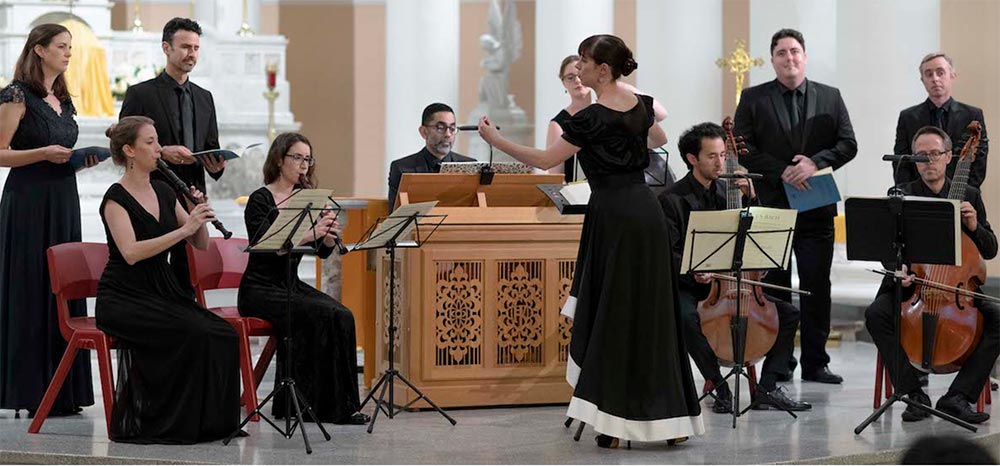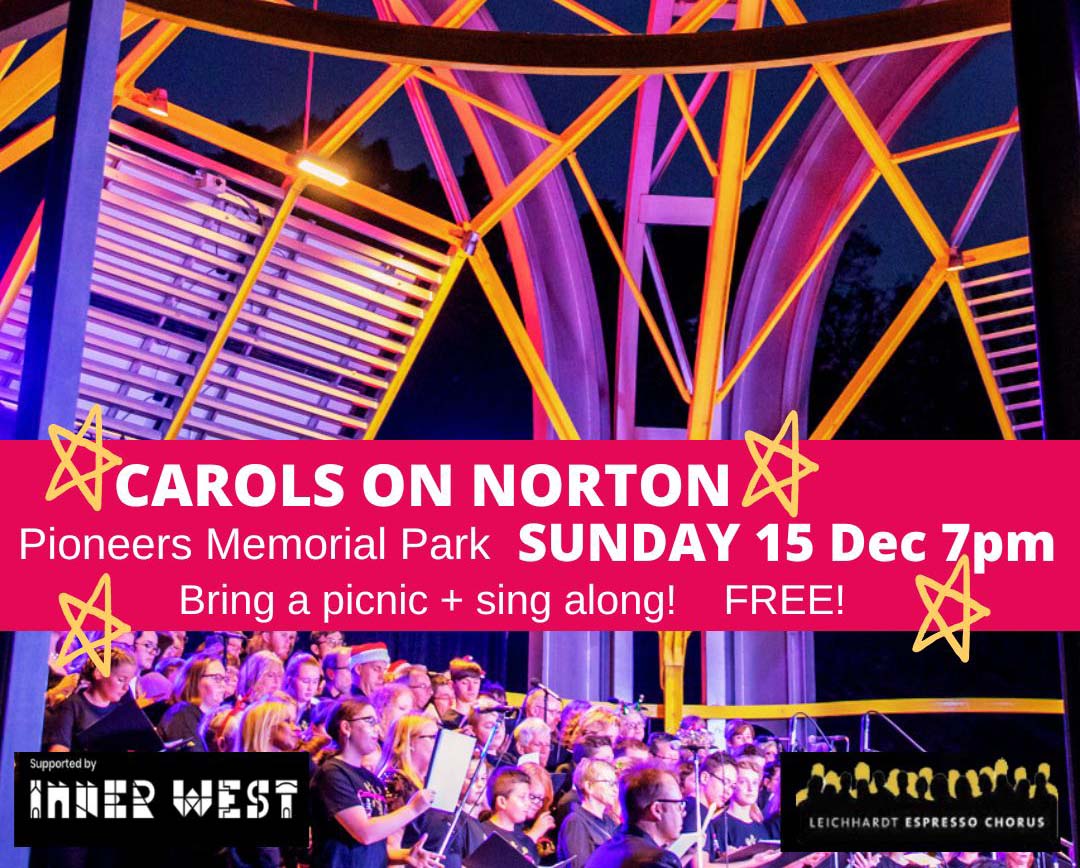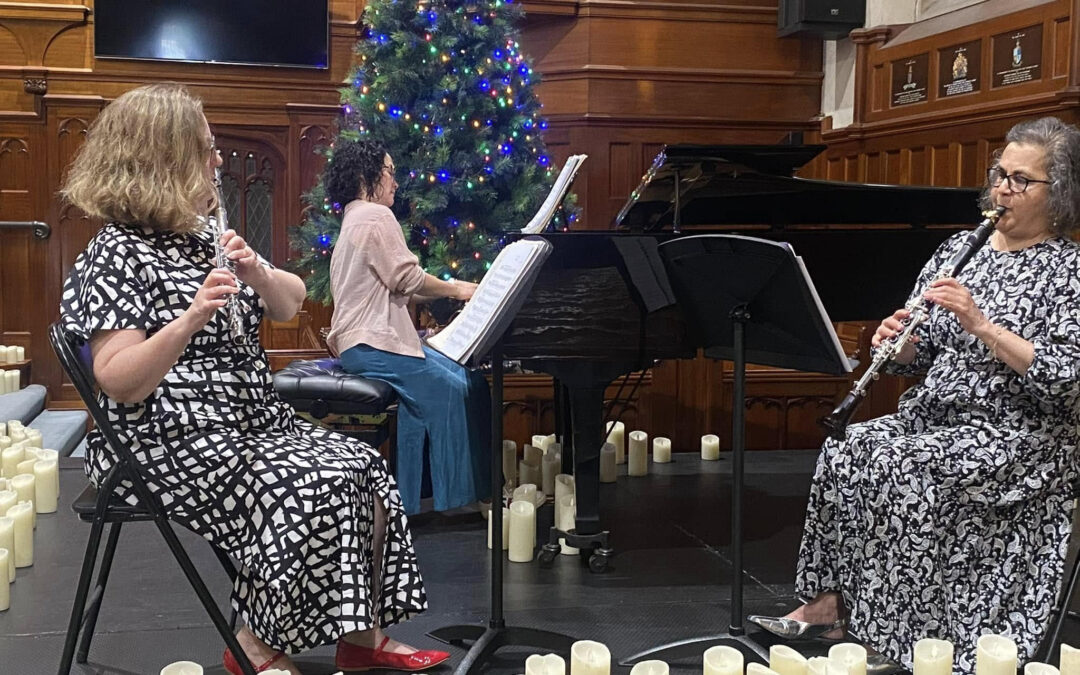Melbourne Digital Concert Hall
Friday 2 October 7.00pm
Bach’s Universal Light
Australian Bach Akademie dir. By Madeleine Easton
J.S. Bach – Cantata BWV 106 ‘Gottes Zeit ist die allerbeste Zeit’ – Actus Tragicus
J.S. Bach – Toccata and Fugue BWV 830 for solo harpsichord
J.S. Bach – Praeludium, Gavotte en Rondeau and Gigue from Partita No. 3 BWV 1006
J.S. Bach – Brandenburg Concerto No. 4 in G major BWV 1049
At ten to seven I had just finished the dishes and was lining up a glass of marsanne and a lemon curd tart to assist me to settle down for the Melbourne Digital Concert Hall’s concert of the evening, held in Sydney at the old Darlinghurst Gaol, strangely enough. The concert was held in the old cell block part of what is now the National Art School and the curved stone walls of this part of the block gave an excellent acoustic. Negotiating the website of the Melbourne Digital Concert Hall I waited a few anxious moments until I found my way to a silent screen showing a lobby chandelier amongst other things, and a countdown display in the middle of the screen for the start of the concert. This gave me the chance to read the programme notes again. These were very informative.
Despite being a youthful work, Bach’s Cantata BWV 106 is considered one of his finer works.
It is scored unusually for two recorders, two violas da gamba, violone and continuo, in this case a small chamber organ. Bach makes full use of this unique scoring throughout the work in one case in the bass aria, using the organ and violone as the continuo (marked “fondamento” in the manuscript of 1768) without the gambas. The four singers took their places spread out against the curved walls behind the “orchestra” who were all seated at some distance from each other observing distancing rules. In general this worked well with a nice balance between all the musicians and singers alike. On the odd occasion I felt the basses were not quite together with the organ, possibly due to the distancing, but the two recorders showed signs that they had worked considerably often together in many a rehearsal.
The opening of the cantata marked molto adagio, was kept to a very measured pace which is fine if you like to make this a work that perhaps emphasises the funereal nature of the piece. In the ensuing choral section the change of time from 4/4 to 3/4 time, worked very well as did later tempi changes in subsequent sections of the cantata. Some of these are “dangerous” for musicians to negotiate and I have heard some ensembles come unstuck at these points for a few moments. The ensemble playing at those moments showed itself to be extremely tight as it did in fact for the whole concert. I particularly liked Crossley’s phrase endings in this, and the final work, where ends of phrases were beautifully rounded off and separated very neatly from the following phrase. I also
noted the violone’s excellent use of crescendo and diminuendo in the well-shaped phrasing, particularly in the bass singer’s solo.
The textures in the final movement call for short chords to punctuate and accompany the melody and this was done very well giving a wonderful lively grace to this movement.
The energy of the four singers contributed to this as well and allowed, as Easton put it, the music to “come into the light”. I found it strange in a concert of this sort to have two solo items flanked by the orchestral works, but we were treated to sections of two marvellous works by Bach, part of the sixth partita for harpsichord and the third partita for violin. The sixth partita is long taking some 35 minutes or more and vies with the fourth in difficulty and intensity.
Only the opening toccata and fugue was performed though. I found Da Costa’s use of legato touch produced a fine singing tone, something that is all too easy to destroy on this, the most mechanical of instruments. Using the close ups of the camera crew, who did a great job by the way, it was easy to see Da Costa preserved good continuity in the phrasing through a really good touch and clever fingering substitution (changing fingers on a note without repeating the note). What surprised me then was the way he changed to the upper keyboard transitioning into a more lyrical section with a marked gap after some dramatic large chords in dotted rhythms in the toccata sections.
The fugue is one of Bach’s more extended fugues for keyboard being in three parts, a toccata followed by a fugue and finally a recapitulation of the toccata section, and the technical difficulties abound throughout. While enjoying the playing, I felt that Da Costa was concentrating on the individual gestures and I lost the sense that this piece has for me, of the inexorability of the whole work. For me this was a performance of seeing the trees and not the woods.
The opening of the prelude to the third partita for violin needs energy and assurance and Easton gave this in spades. The whole performance was played from memory and the technical difficulties of this work were beautifully overcome in this, one of the violinists’ pinnacles of repertoire.
The final work of this concert showed the calibre of the musicians in ensemble and saw two more violins and a viola added to the orchestra with Daniel Yeadon returning to play violoncello. There was a lot of tuning before this work with the musicians taking care to get things just right. The performance was a solid one, giving energy and nuance as well as expressiveness when required. It was rather nice to hear this work as it seems to be left off programmes these days.
A well-chosen tempo for the opening movement gave the musicians a chance to show off their technical abilities. The recorder parts are difficult and, as mentioned before, this work showed that they must have spent considerable time working together in rehearsal. Tuning and ensemble was very tight with the recorders as it was for the whole group. The violin part turns parts of this first movement into a violin concerto calling for some rapid passage work and double and triple stopping. This was all done without any fuss continuing a secure and dependable feel for the entire movement with the accompanying instruments being spot on in their timing in the violin’s demi semi quaver passages.
The andante second movement was well controlled in tone and expressivity making good use of the contrasts written in the music between the sections
of the orchestra. The violin part in the final fugue, as in the first movement, has a few extended sections of very rapid passage work and these were made light of under Easton’s control.
If you have not heard these musicians before then you need to get yourself musically out and about a bit more. Their tone, phrasing, control and interpretation of the music make them worth listening to and following up for future concerts. I look forward to hearing them in a “really live” situation.
PERFORMERS
Madeleine Easton – Director/Violin
Matthew Greco – Violin
Rafael Font – Violin
Marianne Yeomans – Viola
Daniel Yeadon – Cello/Viola da Gamba
Anton Baba – Viola da Gamba
Kirsty McCahon – Violone
Neal Peres Da Costa – Harpsichord/Organ
Mikaela Oberg – Recorder
Alicia Crossley – Recorder
Susannah Lawergren – Soprano
Tobias Cole – Countertenor
Richard Butler – Tenor
Andrew O’Connor – Baritone





























